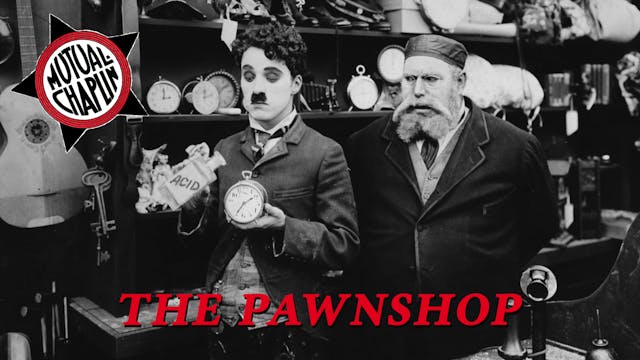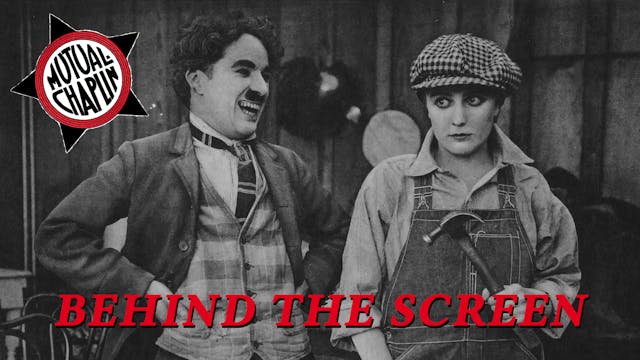The Count (1916)
Chaplin's Mutual Comedies (1916-1917)
•
25m
The fifth film in the Mutual series, THE COUNT, further develops the situations of Caught in a Cabaret (1914) and A Jitney Elopement (1915) and anticipates the future Chaplin films The Rink (1916), The Idle Class (1921), and City Lights (1931), films in which Charlie impersonates a man of means in order to underscore the contrast between rich and poor—one of his favorite themes.
The film was Chaplin’s largest production up to that time, with three substantial sets (the tailor’s shop, the kitchen, and Miss Moneybags’ home). For the film’s dance sequence, Chaplin hired a small orchestra. The slippery dance floor facilitates some memorable eccentric dancing from Charlie, including splits and elevations done by hooking his cane on the chandelier above him.
Up Next in Chaplin's Mutual Comedies (1916-1917)
-
The Pawnshop (1916)
In the sixth Mutual film, Charlie is a pawnbroker's assistant in a pawnshop that evokes the London of Chaplin's childhood. The film is rich in comic transposition, a key element to Chaplin's genius. The apex of such work in the Mutuals is the celebrated scene in THE PAWNSHOP in which Charlie exam...
-
Behind the Screen (1916)
A refinement of his earlier comedies set in a film studio, BEHIND THE SCREEN, Chaplin's seventh film for Mutual, lampoons the unmotivated slapstick of the kind Chaplin disliked when he worked for Mack Sennett. Chaplin made the film as a sort of parody of the knockabout, pie-throwing comedy of the...
-
The Rink (1916)
Chaplin's eighth film for Mutual, THE RINK, is one of Chaplin's most popular comedies. Charlie is an inept waiter who prepares the bill of Mr. Stout by examining the soup, spaghetti, melon stains, and other remnants on the sloppy eater's shirt front, tie, and ear. Charlie employs an unorthodox ap...


